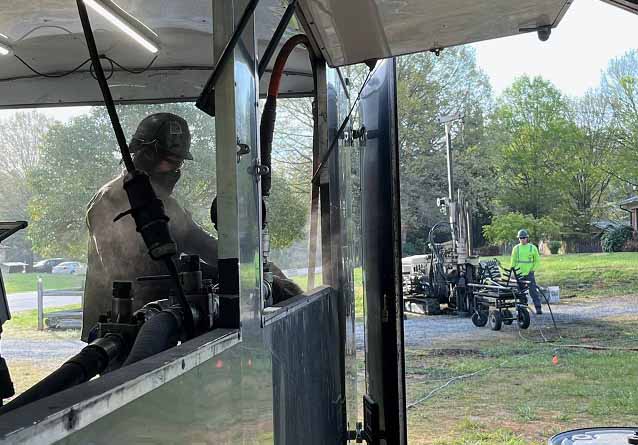ABSTRACT
The subject site is a former retail petroleum station located in Ava, Missouri, with operations dating back to 1950 when the site was initially developed as a truck stop. Aboveground storage tanks (ASTs) were used from the late 1970s to 1991 to store and dispense gasoline and diesel fuel. A Tier I Risk Assessment was completed in 2006 and revised in 2012. Due to the presence of LNAPL and high concentrations of dissolved petroleum constituents, remediation by injection of RPI Products, Inc. BOS 200® was performed prior to site redevelopment in 2013. Pre-injection sampling conducted in May 2013 indicated benzene and TPH-GRO were present in groundwater at 14 and 150 mg/L, respectively. Corrective action goals established in the Missouri DNR-approved Corrective Action Plan (July 2013) were to: 1) reduce concentrations of COCs in shallow groundwater adjacent to the injection areas; 2) reduce LNAPL to below measurable thickness <1/16 inch (<1.6 mm); 3) reduce vapors in shallow soils to the depth of construction; and 4) reduce concentrations of COCs in groundwater to below the Risk-Based Target Levels (RBTL) for a construction worker. Subsequent groundwater monitoring and plume stability analyses demonstrated that each of these remedial goals were achieved. Therefore, the MoDNR issued a No Further Action Letter – Non Residential, dated September 30, 2019.


Midwest NAPL Site Granted NFA After BOS® 200 Application
PROJECT SNAPSHOT
Key Dates:
• Corrective Action Plan approved – August 2013
• Injection of BOS 200® – September 2013
• No Further Action (NFA) Determination by
MDNR – September 30, 2019
Combined Treatment Areas (Figure 1): 18,979 ft2
(1,760 m2 )
The impacted groundwater resided within clay and sandy clay with chert. Depth to groundwater was approximately 6 feet (1.8 m) bgs
Contaminants: The pre-treatment maximum concentration of BTEX constituents above regulatory limits were 14 mg/l benzene and 150 mg/l TPH-GRO
Implementation Method: direct push techniques combined with pressure injection
CHALLENGES & OBJECTIVES
The primary challenge to achieving the project completion milestones was the presence of LNAPL. The goal of the proposed remedial action was to alleviate the risk of fire and explosion during onsite construction. Since no Risk-Based Target Levels (RBTLs) were established for combustion, the corrective action targets were set as the overall reduction of COC concentrations in groundwater and soil vapor, and the reduction of measurable LNAPL thickness to below <1/16th inch (<1.6 mm).
LOCATION
Ava, MO
APPROACH
The BOS 200® injection design was developed based on existing site data with the goal to achieve the stated remedial targets within approximately 12 months from the time of injection. Five distinct treatment areas were established, totaling approximately 18,979 ft2 (1,760 m2) in area, with a total treatment volume of approximately 8,700 yd3 (6,650 m3).
A total of 2,304 injections were completed within 338 points on 7.5-foot (2.3 m) centers in September 2015. Treatment depths within the treatment areas ranged from 6 to 12 feet (1.8 to 3.7 m) in Area E to 6 to 22 feet (1.8 to 6.7 m) in Area B. A total of 48,795 pounds (22,000 kg) of BOS 200® was mixed with 46,080 gallons (174,000 L) of water and injected as a slurry, supplemented with 105 gallons (400 L) of facultative bacteria concentrate.
RESULTS
Following four consecutive groundwater monitoring events (2015 – 2017) demonstrating that cleanup goals had been achieved and that the plume was stable, the MoDNR closed the site and issued a No Further Action Letter – Non Residential to the responsible party on September 30, 2019.
Figure 1.
BOS® 200 Injection Area Map – 2220 Beltline Road SW, Decatur, AL







